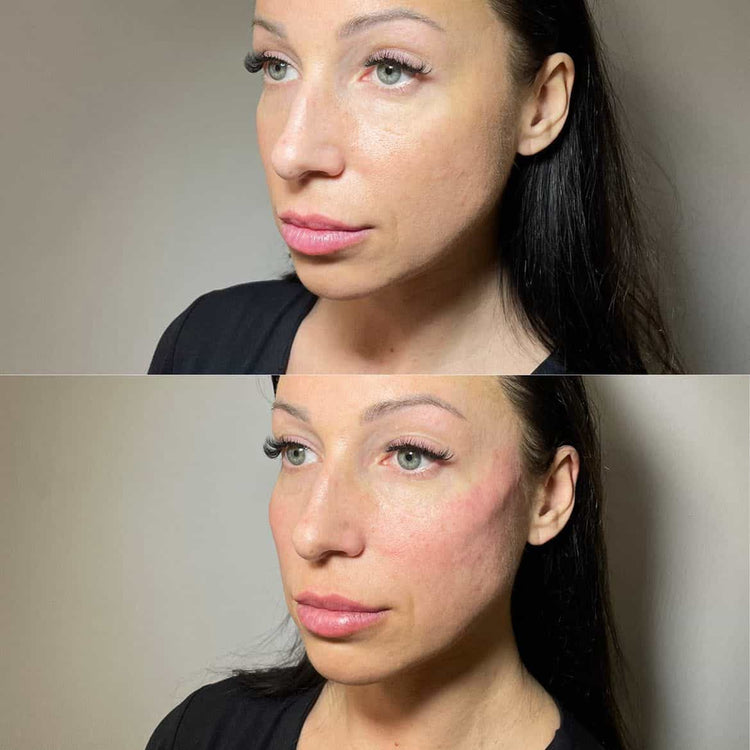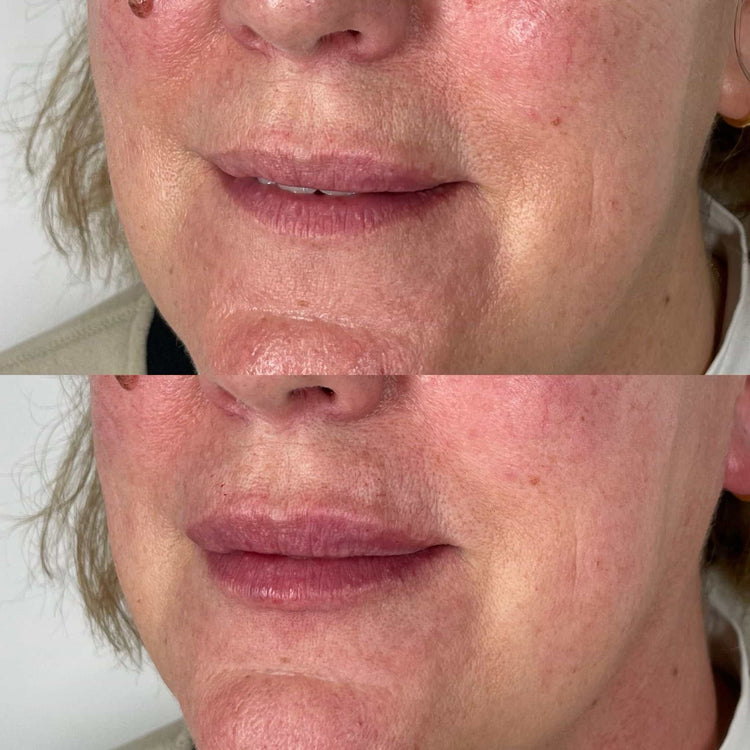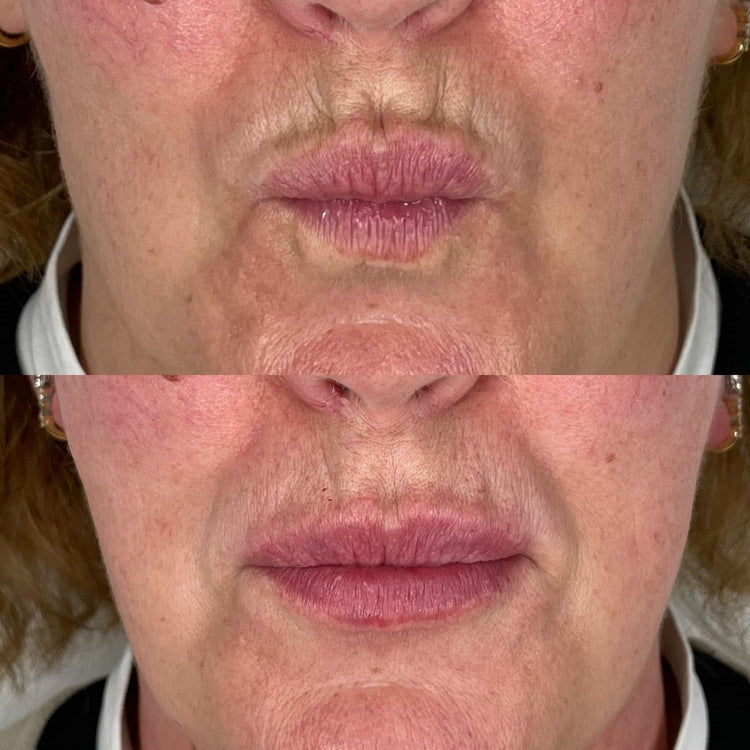Types of Dermal Fillers
Dermal fillers are a popular cosmetic treatment used to restore volume, smooth wrinkles, and enhance facial contours. These injectable gels are composed of various substances, each with unique properties. Hyaluronic acid, a natural substance found in the body, is a common filler ingredient, known for its ability to attract and retain moisture. Other types include poly-L-lactic acid (PLLA), which stimulates collagen production, and calcium hydroxylapatite, which provides immediate volume enhancement.
Hyaluronic Acid Fillers
Hyaluronic acid fillers are a popular choice due to their natural compatibility with the body and ability to provide long-lasting results. They work by hydrating and plumping up skin, reducing the appearance of fine lines and wrinkles. Different types of hyaluronic acid fillers have varying levels of thickness, allowing for targeted treatment of specific areas.
Calcium Hydroxylapatite Fillers
Calcium hydroxylapatite (CaHA) is a biocompatible material derived from calcium phosphate, found naturally in bone and teeth. CaHA fillers are known for their ability to provide immediate volume enhancement and lift, making them suitable for addressing moderate to severe facial wrinkles, folds, and contour deficiencies.
Unlike hyaluronic acid fillers that primarily hydrate the skin, CaHA stimulates collagen production, which helps to improve skin texture and elasticity over time. This dual action of immediate volume augmentation and long-term collagen stimulation makes CaHA a popular option for patients seeking a more permanent result.
Poly-L-Lactic Acid Fillers
Poly-L-lactic acid (PLLA) fillers are synthetic and gradually degrade in the body over time. Unlike hyaluronic acid fillers, PLLA stimulates the production of your own collagen. This process results in a gradual increase in volume over several weeks to months. PLLA fillers are often used for facial contouring and addressing deeper wrinkles.
Recovery Time After Filler Treatments
Dermal filler treatments offer numerous benefits for enhancing facial aesthetics, but understanding recovery time is crucial. After receiving dermal fillers, it’s important to allow your body time to adjust and minimize the risk of complications.
General Recovery Timeline
Recovery time after dermal filler treatments generally varies depending on the type of filler used and the treated area. Typically, mild swelling and bruising are common side effects that usually subside within a few days to a week. Most people can resume their normal activities, including light exercise, within 24-48 hours post-treatment.
For more extensive treatments or those involving sensitive areas like the lips, it may take slightly longer for swelling and bruising to resolve. It’s advisable to avoid strenuous activity, intense sweating, or facial massages for at least a few days following the procedure.
It’s essential to follow your doctor’s specific post-treatment instructions carefully. They will provide personalized guidance on recovery time and any restrictions you may need to observe.
Factors Affecting Recovery
Recovery time after dermal filler treatments generally varies depending on the type of filler used and the treated area. Typically, mild swelling and bruising are common side effects that usually subside within a few days to a week.
Several factors can influence recovery time:
- Type of Filler: Hyaluronic acid fillers tend to have shorter recovery times compared to fillers like poly-L-lactic acid (PLLA) or calcium hydroxylapatite (CaHA), which may require a few weeks for complete settling.
- Treatment Area: Fillers injected into sensitive areas like the lips or eyelids may take longer to heal due to increased blood flow and potential for swelling.
- Individual Healing Ability: Each person’s body responds differently to treatment. Some individuals may recover faster than others.
- Lifestyle Factors: Smoking, excessive alcohol consumption, and certain medications can prolong healing.

Exercise and Dermal Fillers: Considerations and Recommendations
Dermal filler treatments are a popular way to enhance facial appearance by restoring volume, smoothing wrinkles, and improving contours. While these injectable gels offer impressive results, understanding post-treatment care is crucial for optimal outcomes and minimizing potential complications. A key consideration for many individuals is the impact of exercise on recovery.
Immediate Post-Treatment Activity Restrictions
It’s generally safe to resume light exercise within 24-48 hours after dermal filler treatment, but more strenuous activities should be avoided for at least a few days. During this time, the body needs time to process the filler and minimize swelling and bruising.
Strenuous exercise, which increases blood flow and can lead to sweating, should be postponed until any swelling or inflammation has subsided completely.
Avoid activities that put direct pressure on the treated areas for at least a week after treatment. This includes activities like intense facial massages, yoga poses that strain the face, or contact sports.
Always follow your doctor’s specific post-treatment instructions carefully as they will provide personalized recommendations based on the type of filler used and the treated area.
Moderate Exercise Guidelines
After receiving dermal fillers, it is important to allow your body time to adjust and minimize the risk of complications. Recovery time after dermal filler treatments generally varies depending on the type of filler used and the treated area. Typically, mild swelling and bruising are common side effects that usually subside within a few days to a week.
Most people can resume their normal activities, including light exercise, within 24-48 hours post-treatment. For more extensive treatments or those involving sensitive areas like the lips, it may take slightly longer for swelling and bruising to resolve. It’s advisable to avoid strenuous activity, intense sweating, or facial massages for at least a few days following the procedure.
It’s essential to follow your doctor’s specific post-treatment instructions carefully as they will provide personalized guidance on recovery time and any restrictions you may need to observe.
Strenuous exercise, which increases blood flow and can lead to sweating, should be postponed until any swelling or inflammation has subsided completely. Avoid activities that put direct pressure on the treated areas for at least a week after treatment. This includes activities like intense facial massages, yoga poses that strain the face, or contact sports.
Moderate exercise guidelines include walking, gentle stretching, and light cardio activities such as cycling or swimming. Listen to your body and avoid any activity that causes pain or discomfort in the treated area.
High-Impact Activities
Understanding recovery time after dermal filler treatments is crucial for ensuring optimal results and minimizing potential complications. Generally, mild swelling and bruising are common side effects that subside within a few days to a week. Most people can resume light exercise within 24-48 hours post-treatment.
However, it’s important to avoid strenuous activity and intense sweating for at least a few days following the procedure. Strenuous exercise can increase blood flow and potentially worsen swelling or cause bruising.
For high-impact activities like running, jumping, or contact sports, wait until all swelling and inflammation have completely resolved before resuming these activities. This typically takes around a week or more, depending on the individual and the treated area.
Sauna and Hot Baths
Dermal fillers are a popular cosmetic treatment used to restore volume, smooth wrinkles, and enhance facial contours. These injectable gels are composed of various substances, each with unique properties. Hyaluronic acid, a natural substance found in the body, is a common filler ingredient, known for its ability to attract and retain moisture. Other types include poly-L-lactic acid (PLLA), which stimulates collagen production, and calcium hydroxylapatite, which provides immediate volume enhancement.
Hyaluronic acid fillers are a popular choice due to their natural compatibility with the body and ability to provide long-lasting results. They work by hydrating and plumping up skin, reducing the appearance of fine lines and wrinkles. Different types of hyaluronic acid fillers have varying levels of thickness, allowing for targeted treatment of specific areas.
Calcium hydroxylapatite (CaHA) is a biocompatible material derived from calcium phosphate, found naturally in bone and teeth. CaHA fillers are known for their ability to provide immediate volume enhancement and lift, making them suitable for addressing moderate to severe facial wrinkles, folds, and contour deficiencies.

Unlike hyaluronic acid fillers that primarily hydrate the skin, CaHA stimulates collagen production, which helps to improve skin texture and elasticity over time. This dual action of immediate volume augmentation and long-term collagen stimulation makes CaHA a popular option for patients seeking a more permanent result.
Poly-L-lactic acid (PLLA) fillers are synthetic and gradually degrade in the body over time. Unlike hyaluronic acid fillers, PLLA stimulates the production of your own collagen. This process results in a gradual increase in volume over several weeks to months. PLLA fillers are often used for facial contouring and addressing deeper wrinkles.
Dermal filler treatments offer numerous benefits for enhancing facial aesthetics, but understanding recovery time is crucial. After receiving dermal fillers, it’s important to allow your body time to adjust and minimize the risk of complications.
Recovery time after dermal filler treatments generally varies depending on the type of filler used and the treated area. Typically, mild swelling and bruising are common side effects that usually subside within a few days to a week. Most people can resume their normal activities, including light exercise, within 24-48 hours post-treatment.
For more extensive treatments or those involving sensitive areas like the lips, it may take slightly longer for swelling and bruising to resolve. It’s advisable to avoid strenuous activity, intense sweating, or facial massages for at least a few days following the procedure.
It’s essential to follow your doctor’s specific post-treatment instructions carefully. They will provide personalized guidance on recovery time and any restrictions you may need to observe.
Recovery time after dermal filler treatments generally varies depending on the type of filler used and the treated area. Typically, mild swelling and bruising are common side effects that usually subside within a few days to a week.
Several factors can influence recovery time:
- Type of Filler: Hyaluronic acid fillers tend to have shorter recovery times compared to fillers like poly-L-lactic acid (PLLA) or calcium hydroxylapatite (CaHA), which may require a few weeks for complete settling.
- Treatment Area: Fillers injected into sensitive areas like the lips or eyelids may take longer to heal due to increased blood flow and potential for swelling.
- Individual Healing Ability: Each person’s body responds differently to treatment. Some individuals may recover faster than others.
- Lifestyle Factors: Smoking, excessive alcohol consumption, and certain medications can prolong healing.
Dermal filler treatments are a popular way to enhance facial appearance by restoring volume, smoothing wrinkles, and improving contours. While these injectable gels offer impressive results, understanding post-treatment care is crucial for optimal outcomes and minimizing potential complications. A key consideration for many individuals is the impact of exercise on recovery.
It’s generally safe to resume light exercise within 24-48 hours after dermal filler treatment, but more strenuous activities should be avoided for at least a few days. During this time, the body needs time to process the filler and minimize swelling and bruising.
Strenuous exercise, which increases blood flow and can lead to sweating, should be postponed until any swelling or inflammation has subsided completely.

Avoid activities that put direct pressure on the treated areas for at least a week after treatment. This includes activities like intense facial massages, yoga poses that strain the face, or contact sports.
Always follow your doctor’s specific post-treatment instructions carefully as they will provide personalized recommendations based on the type of filler used and the treated area.
After receiving dermal fillers, it is important to allow your body time to adjust and minimize the risk of complications. Recovery time after dermal filler treatments generally varies depending on the type of filler used and the treated area. Typically, mild swelling and bruising are common side effects that usually subside within a few days to a week.
Most people can resume their normal activities, including light exercise, within 24-48 hours post-treatment. For more extensive treatments or those involving sensitive areas like the lips, it may take slightly longer for swelling and bruising to resolve. It’s advisable to avoid strenuous activity, intense sweating, or facial massages for at least a few days following the procedure.
It’s essential to follow your doctor’s specific post-treatment instructions carefully as they will provide personalized guidance on recovery time and any restrictions you may need to observe.
Strenuous exercise, which increases blood flow and can lead to sweating, should be postponed until any swelling or inflammation has subsided completely. Avoid activities that put direct pressure on the treated areas for at least a week after treatment. This includes activities like intense facial massages, yoga poses that strain the face, or contact sports.
Moderate exercise guidelines include walking, gentle stretching, and light cardio activities such as cycling or swimming. Listen to your body and avoid any activity that causes pain or discomfort in the treated area.
Understanding recovery time after dermal filler treatments is crucial for ensuring optimal results and minimizing potential complications. Generally, mild swelling and bruising are common side effects that subside within a few days to a week. Most people can resume light exercise within 24-48 hours post-treatment.
However, it’s important to avoid strenuous activity and intense sweating for at least a few days following the procedure. Strenuous exercise can increase blood flow and potentially worsen swelling or cause bruising.
For high-impact activities like running, jumping, or contact sports, wait until all swelling and inflammation have completely resolved before resuming these activities. This typically takes around a week or more, depending on the individual and the treated area.
Saunas and hot baths are also best avoided for at least a few days following dermal filler treatment as heat can increase blood flow to the treated area, potentially leading to swelling and bruising.
Tips for Safe Exercise After Dermal Filler Treatments
Understanding recovery time after dermal filler treatments is essential for maximizing results and minimizing potential complications. While most people can resume light exercise within 24-48 hours post-treatment, it’s crucial to avoid strenuous activities that increase blood flow or put pressure on treated areas for at least a few days.
Strenuous exercise, intense sweating, and activities like facial massages, yoga poses that strain the face, or contact sports should be avoided until any swelling or inflammation has completely subsided. This typically takes a week or more depending on individual healing and the treated area.
Listen to Your Body
Listen to your body after dermal filler treatments. If you feel any pain or discomfort during exercise, stop immediately and rest.
Avoid strenuous activities that increase blood flow to the treated areas for at least a few days following your treatment. This includes high-impact exercises like running, jumping, and contact sports. Moderate activities like walking, gentle stretching, and light cardio are generally safe.
Remember, everyone heals differently, so it’s important to follow your doctor’s specific post-treatment instructions carefully.
Hydration and Nutrition
Following dermal filler treatments, hydration and proper nutrition are crucial for optimal recovery and results.
Hydration: Drink plenty of water throughout the day to help flush out toxins and support the body’s healing processes. Hydration also helps maintain skin elasticity and plumpness, enhancing the effects of your dermal filler treatment.
Nutrition: Focus on a balanced diet rich in fruits, vegetables, lean proteins, and healthy fats.
- **Protein:** Essential for collagen production, which is vital for maintaining skin structure and supporting the long-term effects of dermal fillers.
- Vitamins and Minerals:
Antioxidants found in fruits and vegetables help protect against free radical damage, promoting healthy skin. Vitamin C is particularly important for collagen synthesis. - Healthy Fats: omega-3 fatty acids found in oily fish and nuts can reduce inflammation and promote skin health.
Avoid excessive alcohol consumption and caffeine as they can dehydrate the body and potentially hinder healing.
Sun Protection
Following dermal filler treatments, it’s essential to protect your skin from the sun’s harmful ultraviolet (UV) rays. The fillers themselves don’t make your skin more sensitive to the sun, but unprotected exposure can damage your skin and diminish the long-term results of your treatment.
Here are some sun protection tips to follow after dermal filler treatments:
- **Wear sunscreen daily:** Apply a broad-spectrum sunscreen with an SPF of 30 or higher, even on cloudy days. Reapply every two hours, especially after sweating or swimming.
- **Seek shade:** Limit your time in direct sunlight, particularly during peak hours (10 am to 4 pm) when UV rays are strongest.
- **Protective clothing:** Wear long-sleeved shirts, pants, a wide-brimmed hat, and sunglasses with UV protection to shield your skin from the sun.
- Avoid tanning beds: Tanning beds emit harmful UV radiation that can damage your skin and accelerate aging.
By consistently following these sun protection tips, you can help preserve your dermal filler results, maintain healthy skin, and reduce the risk of sun damage.
Potential Complications of Exercising Too Soon
Exercising too soon after dermal filler treatments can potentially lead to complications such as increased swelling, bruising, or displacement of the filler. It’s important to allow time for your body to process the filler and minimize any potential risks.
Swelling and Bruising
Exercising too soon after dermal filler treatments can potentially worsen swelling and bruising. The filler may also be displaced if you engage in strenuous activity before it has had time to settle properly.
While light exercise, like walking or gentle stretching, is generally safe within a day or two after treatment, it’s best to avoid any activities that involve intense sweating, direct pressure on the treated areas, or high impact for at least a few days. Strenuous exercises, such as running, jumping, or contact sports, should be postponed until all swelling and inflammation has completely subsided, which can take a week or longer depending on the individual and the treated area.
Listen to your body and avoid any activity that causes pain or discomfort in the treated area. Always follow your doctor’s specific post-treatment instructions carefully as they will provide personalized recommendations based on the type of filler used and the treated area.
Migration of Filler Material
Exercising too soon after dermal filler treatments can lead to a few potential complications:
- Increased Swelling and Bruising: Strenuous activity increases blood flow, which can exacerbate swelling and bruising around the treated areas.
- Filler Migration: Vigorous movement or pressure on the injected filler can cause it to shift from its intended location. This can result in uneven contours or loss of desired effects.
- Delayed Healing: Strenuous exercise might impede the healing process, potentially prolonging recovery time and increasing the risk of complications.
Enquire about dermal fillers to rejuvenate your skin at It’s Me & You Clinic with Dr. Laura Geige
- Jaw Fillers For A Defined Jawline Near Brookwood, Surrey - May 14, 2025
- Exosome Therapy For Skin Rejuvenation Near Worcester Park, Surrey - May 13, 2025
- Non-Surgical Brazilian Bum Lift In Kingswood Surrey - May 12, 2025
